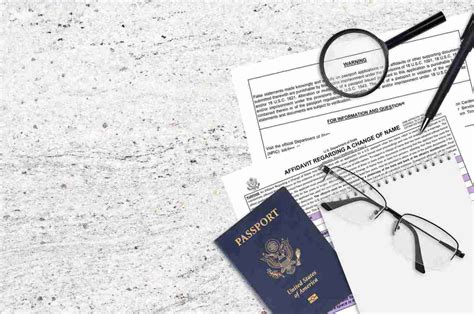How to Legally Change Your Name: A Step-by-Step Guide
Changing your name can be a significant life event, whether you're embracing a new identity, simplifying a complicated name, or correcting an error. This guide provides a comprehensive, step-by-step process for legally changing your name, emphasizing the legal requirements and variations depending on your location. Remember, the specifics can vary by state/province and country, so always confirm with your local authorities.
Understanding the Process: Key Considerations
Before diving into the specifics, understand that changing your name legally involves more than just starting to use a new one. It's a formal legal procedure requiring official documentation and several steps. Key considerations include:
- Reason for the Change: While you don't usually need to justify your name change, understanding your reason can help you navigate the process more smoothly.
- Your Location: Laws differ significantly depending on where you reside. The process might be simpler in some jurisdictions than others.
- Fees: Expect to pay fees for court filing, publication (in some areas), and potentially other administrative costs.
- Documentation: Gather necessary documents beforehand to streamline the process.
Step-by-Step Guide to Legally Changing Your Name
This guide outlines a general process. Always verify the specific requirements for your jurisdiction.
1. Research Your Local Requirements
This is the most crucial first step. Visit your local courthouse or government website to find the exact procedures and forms required in your area. Look for information on:
- Name Change Petition/Application: This is the formal document you'll need to file with the court.
- Required Documentation: This typically includes identification (driver's license, passport), proof of residency, and possibly other supporting documents depending on your reason for changing your name (marriage certificate, divorce decree, etc.).
- Court Fees: Determine the applicable fees to avoid delays.
- Publication Requirements: Some jurisdictions require publishing a notice of your name change in a local newspaper. This step adds time and cost to the process.
- Hearing/Court Appearance: Find out if a court appearance is mandatory.
2. Prepare Your Petition/Application
Carefully fill out the required forms accurately and completely. Common information needed includes:
- Your Current Legal Name: Your full legal name as it appears on official documents.
- Your Desired New Name: Your chosen full legal name.
- Reason for Name Change: While not always mandatory, briefly stating your reason can be helpful.
- Proof of Residency: Provide documentation proving your current address.
- Other Supporting Documents: Include any relevant documents like marriage certificates or divorce decrees.
3. File Your Petition/Application with the Court
Once your petition is complete, file it with the appropriate court in your jurisdiction. Keep copies of everything you submit. The court clerk will guide you through the filing process and payment of fees.
4. (If Required) Publish a Notice of Name Change
If your jurisdiction mandates it, you'll need to publish a notice of your name change in a designated local newspaper. The court will usually provide instructions on how to do this.
5. Attend the Court Hearing (If Required)
If a court hearing is required, attend the hearing as scheduled. Be prepared to answer any questions the judge may have.
6. Obtain Your Official Name Change Order
After the court approves your petition, you'll receive an official court order reflecting your name change. This document is your legal proof of the name change.
7. Update Your Documents
With your official court order, update all your important documents, including:
- Driver's License/State ID: Contact your DMV to update your license.
- Passport: Contact your passport agency to update your passport.
- Social Security Card: Contact the Social Security Administration to update your card.
- Bank Accounts: Notify your banks and other financial institutions.
- Other Important Documents: Update any other relevant documents like insurance policies, credit cards, etc.
Important Reminders
- Seek Legal Advice: If you have any doubts or complex circumstances, consulting an attorney specializing in name changes is highly recommended.
- Patience is Key: The process can take several weeks or even months depending on your jurisdiction and court workload.
- Accuracy is Crucial: Ensure all information on your petition and supporting documents is accurate to avoid delays or rejection.
By following these steps and tailoring them to your specific location, you can successfully and legally change your name. Remember to always double-check local regulations and seek professional guidance when necessary.
